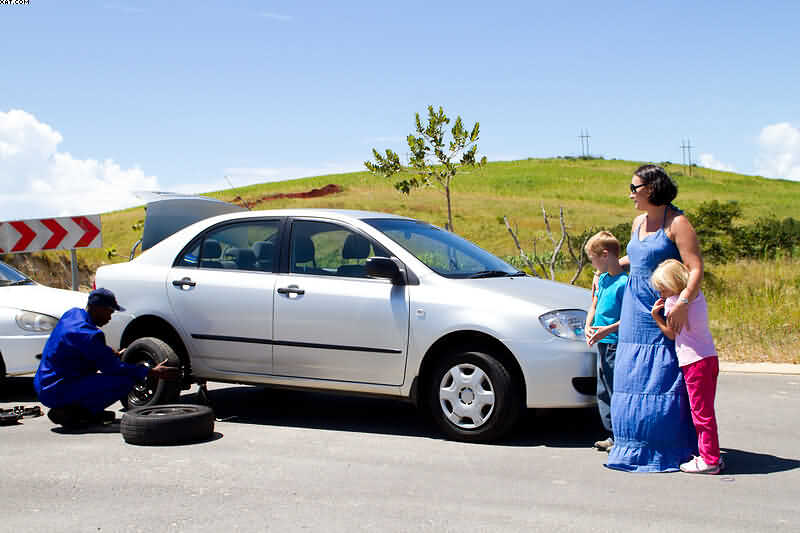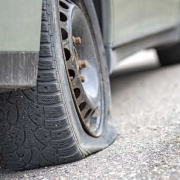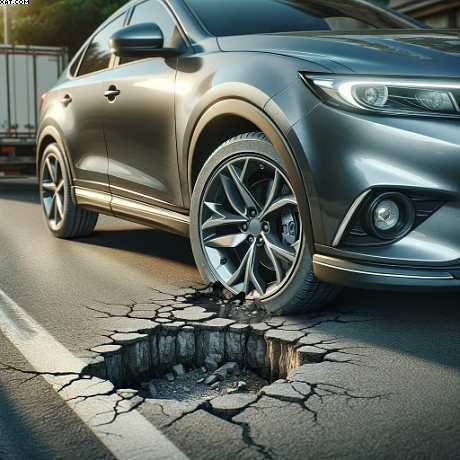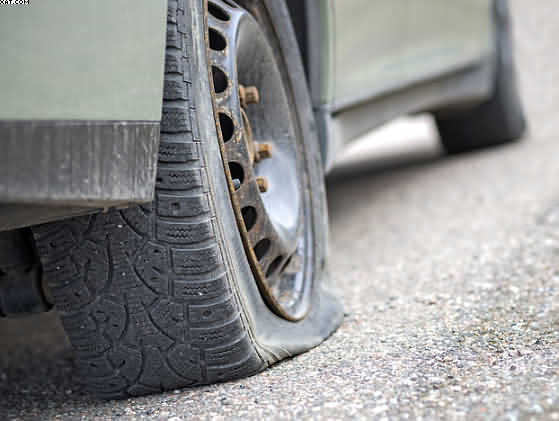Flat Tyres A Guide for Women
Table of Contents

Flat Tyres A Guide for Women
Flat Tyres A Guide for Women
Sometimes it may be great to play a damsel in distress. So, have a strong and well-toned man fix your flat tyre. Importantly, I think every woman ought to know how to change to the spare wheel. After all, having your tyre blown is never something anyone plans. Of course, you may not have any eager boy scout waiting around to rescue you. There is no need to keep the wheel changing in a man’s domain. times are changing and you should too. It’s time to empower yourself and get ready to tackle that flat tyre !
1. First of all, if there is a place for you to move your car out of the way,!
So, if there is a place to where you can get out of the way, then move your car there. Make sure oncoming traffic will be able to see you. Turn on your hazards and if you have a warning triangle,. Then place where it will be clearly visible. Also, make sure the place you move your vehicle to is as flat as possible. Avoid soft ground and inclines. Whenever possible, place some bricks, blocks, or large rocks. Naturally, under your car to prevent your car from rolling backwards.
2. If you have hubcaps, remove them. Flat Tyre: A Woman’s Guide
These are the covers on your wheels. Check your manual on how to remove them. I highly suggest you look at this beforehand, not when you have already blown a tyre.
3. Next, you need to remove the wheel nuts.
These are the nuts or bolts that hold your wheel in place. You will need a wheel brace to do this. Of course, the wheel brace comes in different shapes and sizes. Commonly known as a “spider.”. So, the spider wrench is the T-shaped wrench. Of course, that should be together with all your other tools. The shape of the wrench makes for easy leverage. However, if your upper-body strength is lacking, you may not have the heft or muscle needed to loosen the lug nuts. Importantly, you may have to resort to stepping on the T-arm to obtain better leverage. Always remember, left to loosen and right to tighten.
4. Now you need your car jack to raise your car. Flat Tyres A Guide for Women
Most cars have a flat plate behind the front wheels and just in front of the back ones for this purpose. Place the jack under the “jacking point” nearest to the tyre to be changed ! Raising the jack with the jack handle to meet the jacking point plate. Double check and make sure your car will be steady once it is raised. Safety is crucial whenever you are working with your car. Now raise your car about 15 cm of the ground. Don’t forget that when you re-fit an inflated spare wheel.Thus, will need room so make sure there is enough space for the spare to be placed on.
5. by grabbing it with both hands, one on each side.
So after removing the wheel nuts! Pull the flat wheel straight and off. Quickly line up your spare with the bolts and slide it on. Replace the lug nuts, but do not tighten them completely. When you have lowered your car, use the lug wrench to tighten the lug nuts in opposite pairs. Make sure these are as tight as possible! Because you absolutely do not want your tyre to come off when you start driving away.
6. It’s time to clean up and put things back in place. Flat Tyres A Guide for Women
Put all your tools together and place them back where they were stored. Always put them back in the same place so you know where to find them in case of emergencies. Knowing where all of the tools are before you get into an emergency situation is suggested. Put your flat tyre where your spare one was, and make sure to have it fixed right away.
7. Of course, many cars don’t have spares now! Flat Tyres A Guide for Women
Many cars now run on run-flat tyres and do not have a spare wheel. In my opinion, this is a great idea! So when a puncture occurs, the driver can carry on driving the car. Albeit at a steady 50 mph! Cars with runflats can then make their way to a tyre centre and have the problem attended to. Some cars only carry a can of air sealant and no spare wheel. This idea is to save on the weight of the car and reduce emissions.
8. I would advise most ladies to join a motoring organisation. Flat Tyres A Guide for Women
Although that you now know how to change your flat tyre ! I would strongly recommend that all motorists, not just ladies, join one of the road side assistance companies. So we all must have noticed how busy our roads are now getting. Especially, on the motorways. Recently, I had the dis-pleasure of having a tyre blowout on the M1 motorway.
Of course, it was dark and raining and was a very frightening experience. However, it is a job that I have done all my life and quickly changed the wheel at the roadside. However, it did open my mind to the thought that this would have been horrific for a lady driver to attempt this task. Simply put, it would be far better to join the “AA” “Green Flag” or “RAC“. Naturally putting your mind at rest !
A woman alone with her car and a flat tyre could be a signal for the less-than-honourable to take advantage of the situation. If you have no recourse but to change the tyre yourself, make sure you have some form of protection nearby, like pepper spray. Also, make sure to call a friend or relative to let them know what happened when your tyre blows so someone is aware of where you are and the situation you are in. This will at least give people you know information of your whereabouts.
9, Having your tyres in good condition is one way to avoid a flat tyre.
While some causes, like a puncture from a nail or other sharp object, cannot be avoided,. So, keep your tyres well inflated. Along with careful driving, it will lessen the chances of your having to change a flat in the future.
And if you need new tyres,! Contact us on www.pellontyres.co.uk as we are independently owned tyre centres across the UK . Consequently, to help you find the right tyre for your needs,. Its knowledgeable and professional staff will be able to give you brand-neutral car safety advice to help you make the right decision for your tyre needs. And if your car needs other types of auto service, they offer that as well.
• An open and honest approach with the customers
• A high standard of work and excellent value for money
• 12 month guarantee on parts and labour
• An open invitation to inspect, review and rate the garages of your choice to make the best informed decision for your needs
Stay safe on the road, ladies!
So in 2024, we have become members of Tyresafe.org to help promote tyre safety.



